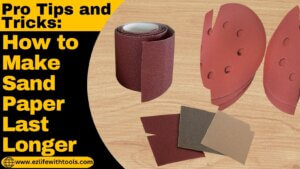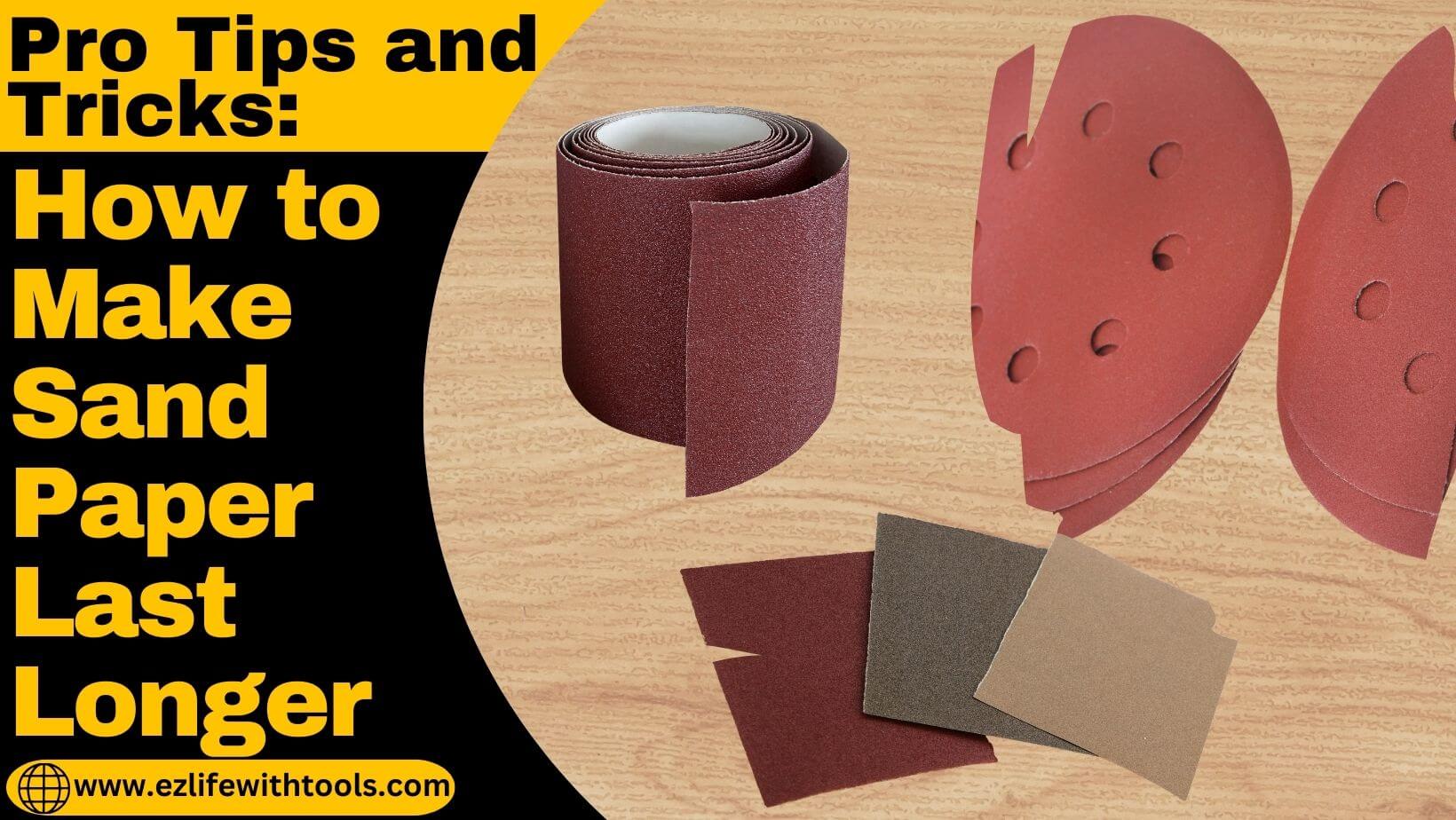How to Make Sandpaper Last Longer: Pro Tips and Tricks

If you are a professional or passionate DIY enthusiast, it can’t be neglected that you will not require sandpaper
in woodworking or metalworking projects.
Of course, you will use it, but it can be frustrating when it wears out quickly.
Therefore, a question always arises in mind: how to make sandpaper last longer.
The good news is that in this article, I will explain numerous strategies to maximize the lifespan of your sandpaper, which will save you time and money.
So, to learn all the valuable strategies, keep attached with me.
How to Make Sandpaper Last Longer with Effective Strategies
Here below are some valuable strategies to increase the sandpaper life.
- Selecting the Right Sandpaper
- Proper Sanding Techniques
- Cleaning and Maintenance
- Storage Solutions
1- Selecting the Right Sandpaper
The first and most important strategy to make sandpaper last longer begins with selecting the right sandpaper according to your project. Here are some essential tips for choosing the right sandpaper.
Grit Selection: Start with the right grit sandpaper according to a specific task because low grits are suitable for heavy material removal, and high grits are suitable for fine and smooth finishing. If we use coarser Grit continuously than necessary, it can lead to premature wear.
Quality Matters: It is a simple rule of daily life that quality products always last longer. So, invest in high-quality sandpaper due to its superior abrasive properties. 3M and Norton are the most famous sandpaper brands for their quality products.
Backing Material: Sandpaper can consist of paper, cloth, or film backing. Paying attention to the backing material in the selection of sandpaper is very important because, with cloth backing, sandpaper is more durable, and less prone to tear.
Variety of Abrasives: Different abrasives are suited for specific materials. Silicon carbide sandpapers are great for metals and plastics, while aluminum oxide works well with wood. So, understand first the type of abrasive material to choose the right sandpaper according to your project needs.
2- Proper Sanding Techniques
The sanding technique matters because it will not only save your time but also increase the life of the sandpaper.
Consistent Pressure: While using any machine or tool, applying even pressure is very important because excessive pressure can cause the sandpaper to wear out quickly. So, always apply even pressure and avoid pressing too hard.
Keep It Moving: Always keep the sandpaper in a moving state, and don’t focus only on a single spot for a long time because it will prematurely dull the sandpaper.
Use the Right Tool: Different sandpapers are made for different sanding tools, so always choose the appropriate sanding tool, like block sander, orbital sander, and belt sander, according to the need of your project.
Check for Wear: Add regular inspection of sandpaper in your daily routine work. It will be aware of any requirement about cleaning and replacing sandpaper.
3- Cleaning and Maintenance
Maintaining and making your sandpaper last longer with cleaning is an important method. It will not only save our money but also save the precious time.
We can clean the sandpaper using different methods, like an air blower, the toes of old sneakers, soap, and, most importantly, a sandpaper cleaning stick.
Sandpaper cleaners are designed to remove the residue and extend the sandpaper’s life.
Here, we will describe it in detail.
-
- First, fix your sanding tool, which you are using (belt sander, block sander, orbital sander), on the working table with the help of bolts.
- The sanding tool should not move To and FRO.
- Switch on the sanding tool so the sandpaper can move.
- Pick and hold sandpaper cleaner.
- Close the one end of your cleaner stick towards the moving sandpaper and touch it with the surface of it.
- All the dirt will be cleaned automatically.
- After cleaning, please switch off the sanding tool and remove it from the working table.
- Now your sandpaper is again ready for a new project.
4- Storage Solutions
After completing any project, it is necessary to store the sandpaper properly. Here are some storage solutions.
Dry and Cool Environment: Moisture is the enemy of sandpaper; it can damage the abrasive particles and backing material, which will decrease efficiency and longevity. So, always store your sandpaper in a dry, cool place.
Organize by Grit: I have already told you that low grits are suitable for heavy material removal, and high grits are ideal for delicate and smooth finishing. Therefore, organizing them by Grit will make finding the right grit sandpaper for your project easy and decrease the chances of the wrong selection.
Conclusion
It is not only possible to extend the sandpaper life but is also a cost-effective technique for any kind of woodworking or DIY project.
Only one thing is required: if we follow the above-given sanding, maintaining, storage and cleaning techniques, we can create smoother and more professional finishing with the use of sandpaper again and again.
Ok, now go and apply those techniques in your working projects.
Thank you for your precious time.
Best wishes
Frequently Asked Questions
Can you revive sandpaper?
Yes, you can do it. But remember that sandpaper does wear over time. If you want to revive sandpaper remove dust and debris with the help of brush or cleaning block.
Does sandpaper degrade over time?
Yes, sandpaper can degrade over time due to several factors:
1- If yo use sandpaper continuously, it will lose it abrasive properties.
2- If you stores it in humid of damp environment, it will reduce its effectiveness.
3- Even if stored properly, sandpaper can deteriorate over time.
4- Accumulation of debris and material on the sandpaper surface can also degrade its performance and effectiveness.
What does water do for sandpaper?
Water can be used with sandpaper for certain purposes like wet sanding, removing debris or cooling. But remember all sandpapers are not designed for wet use. So, it is important to check before.

